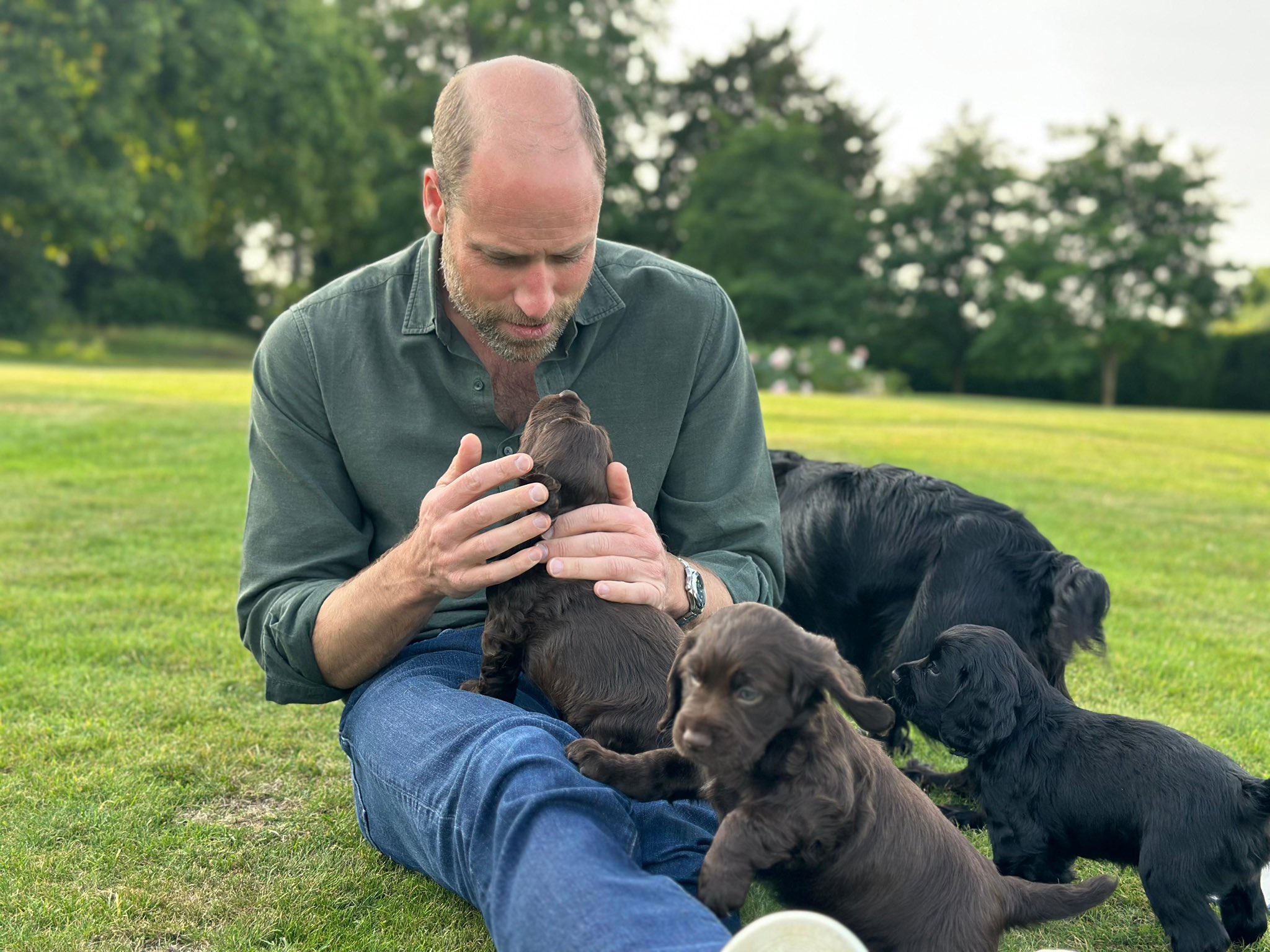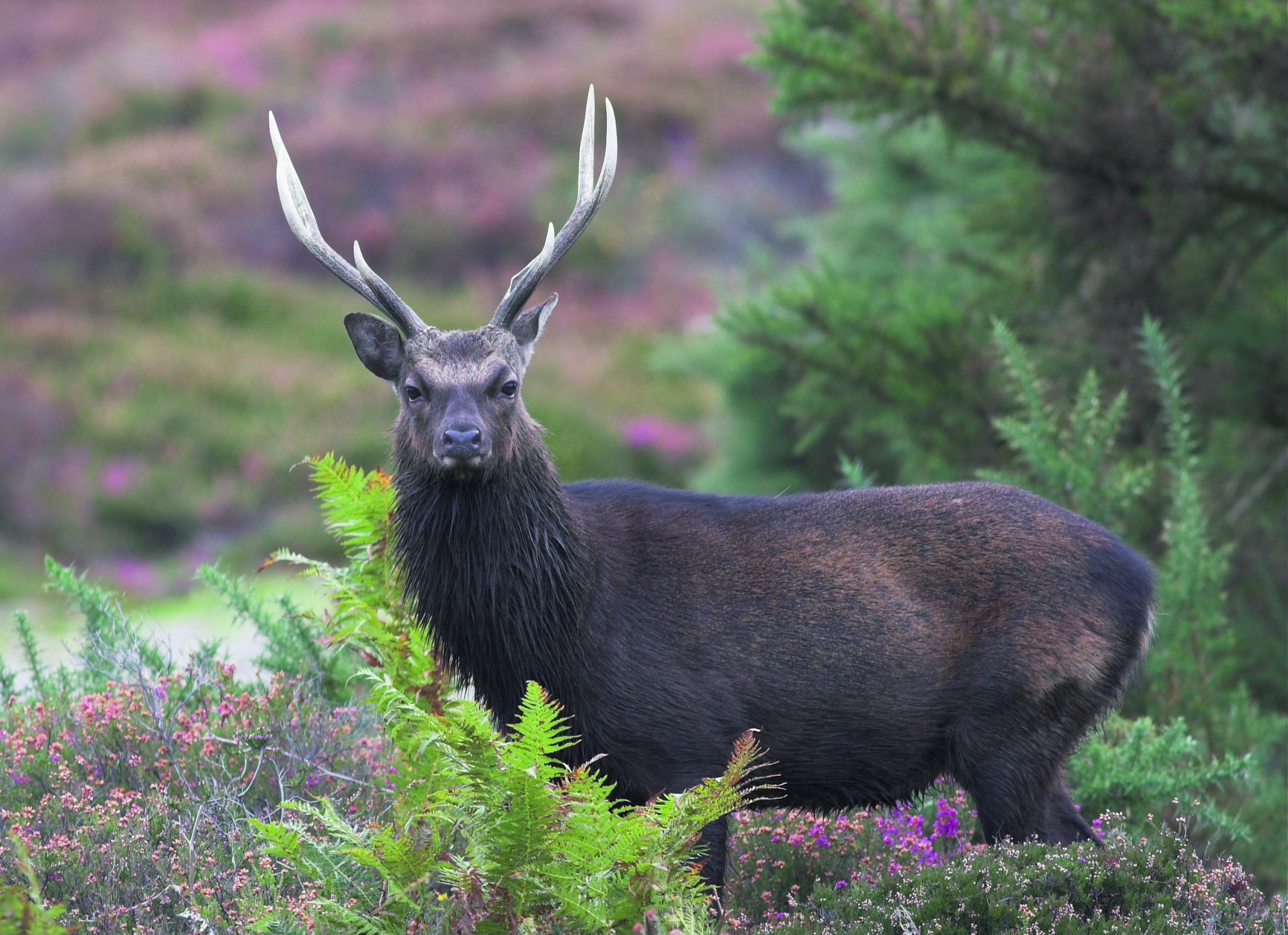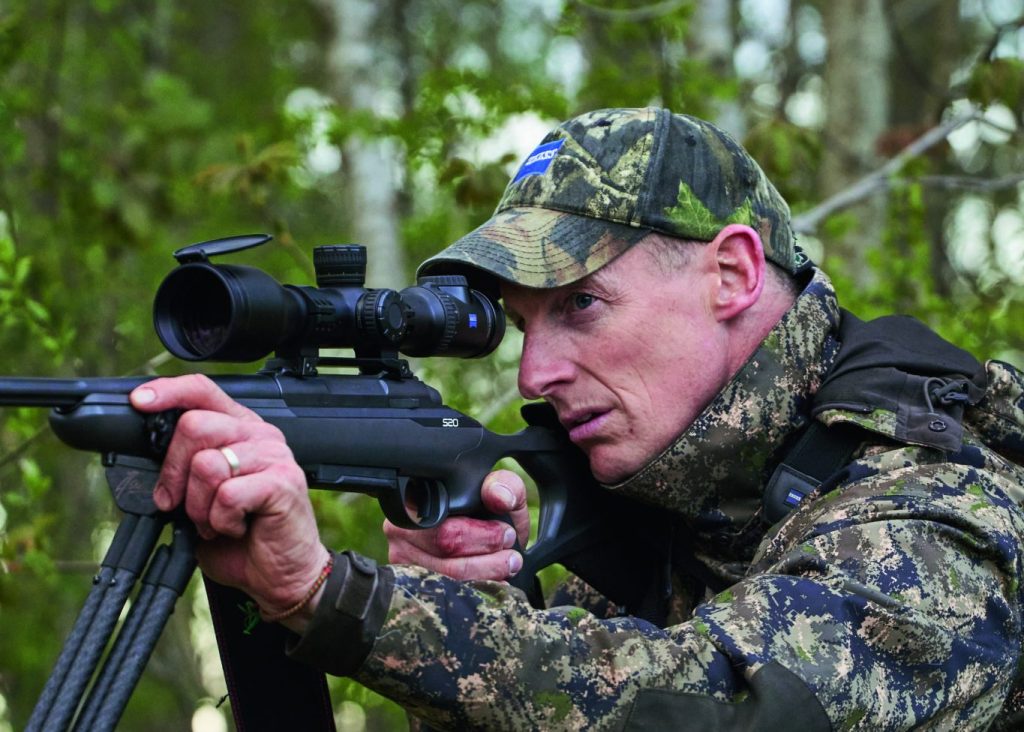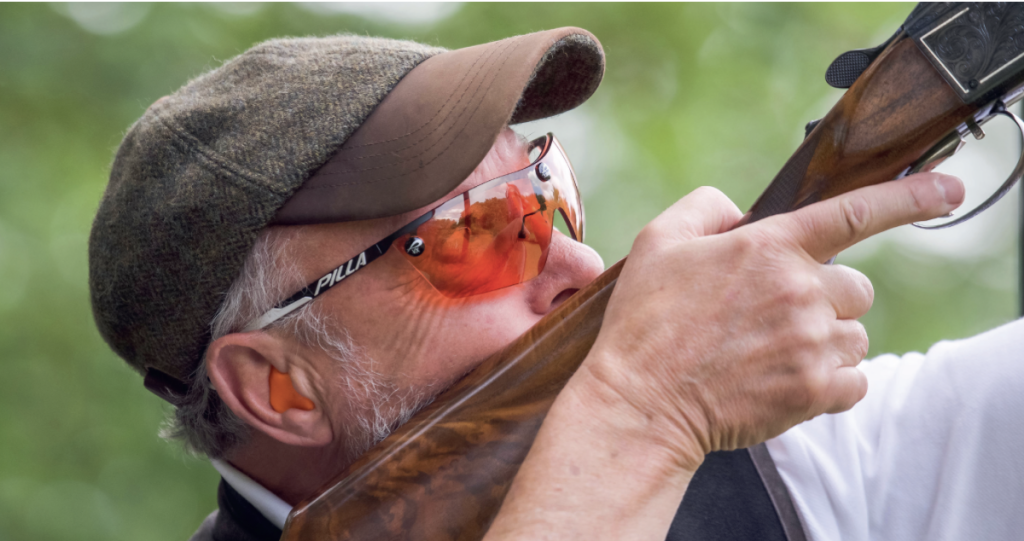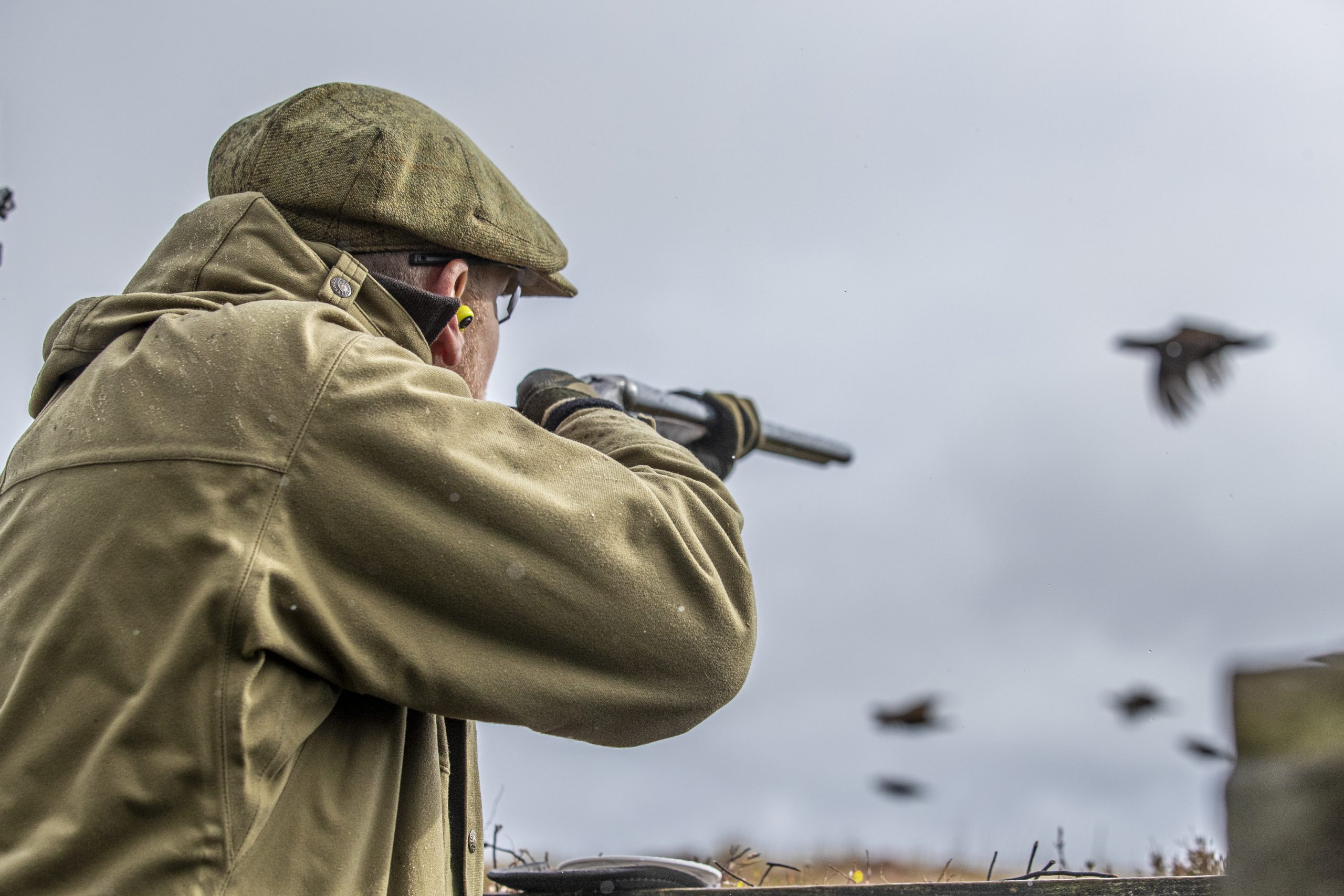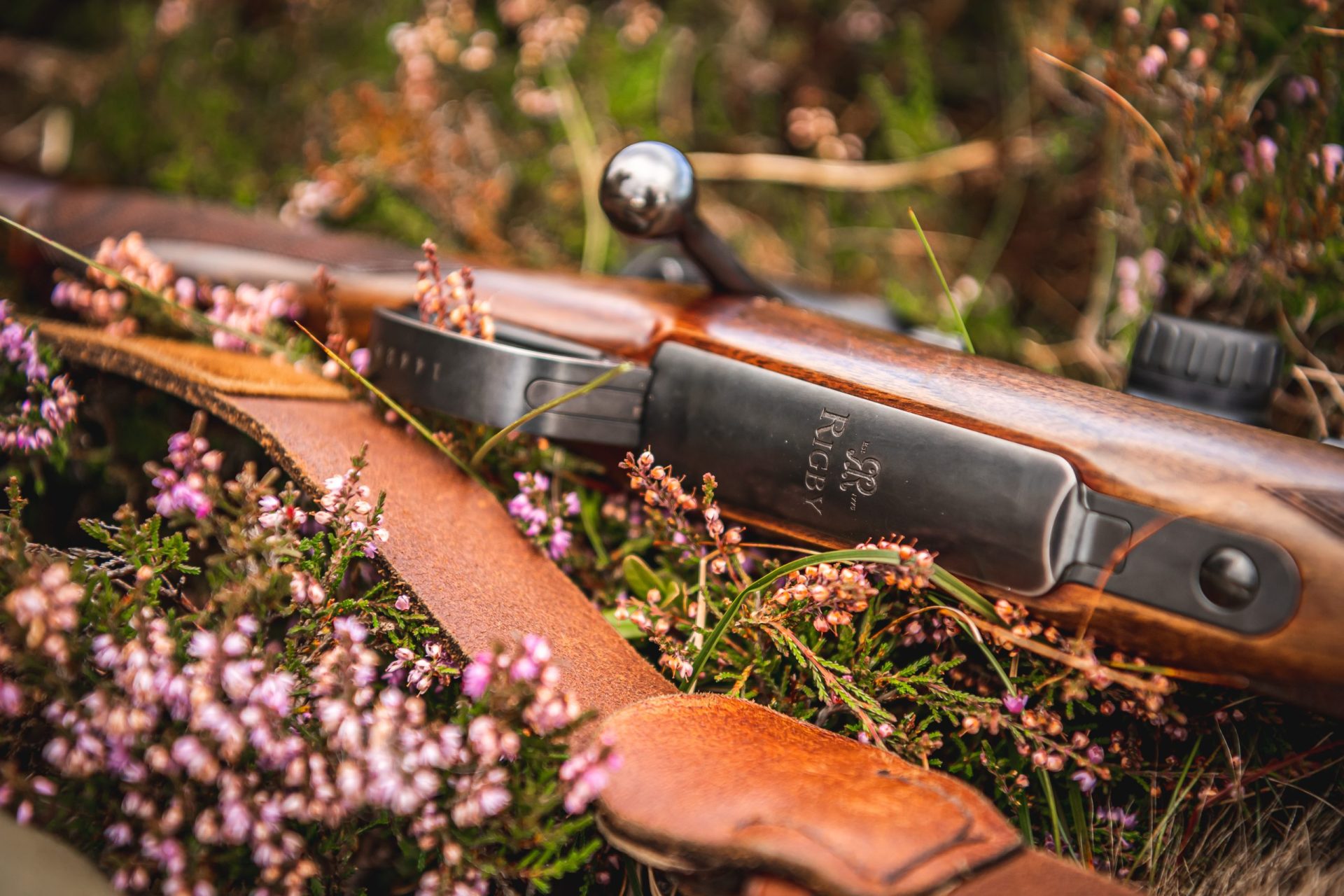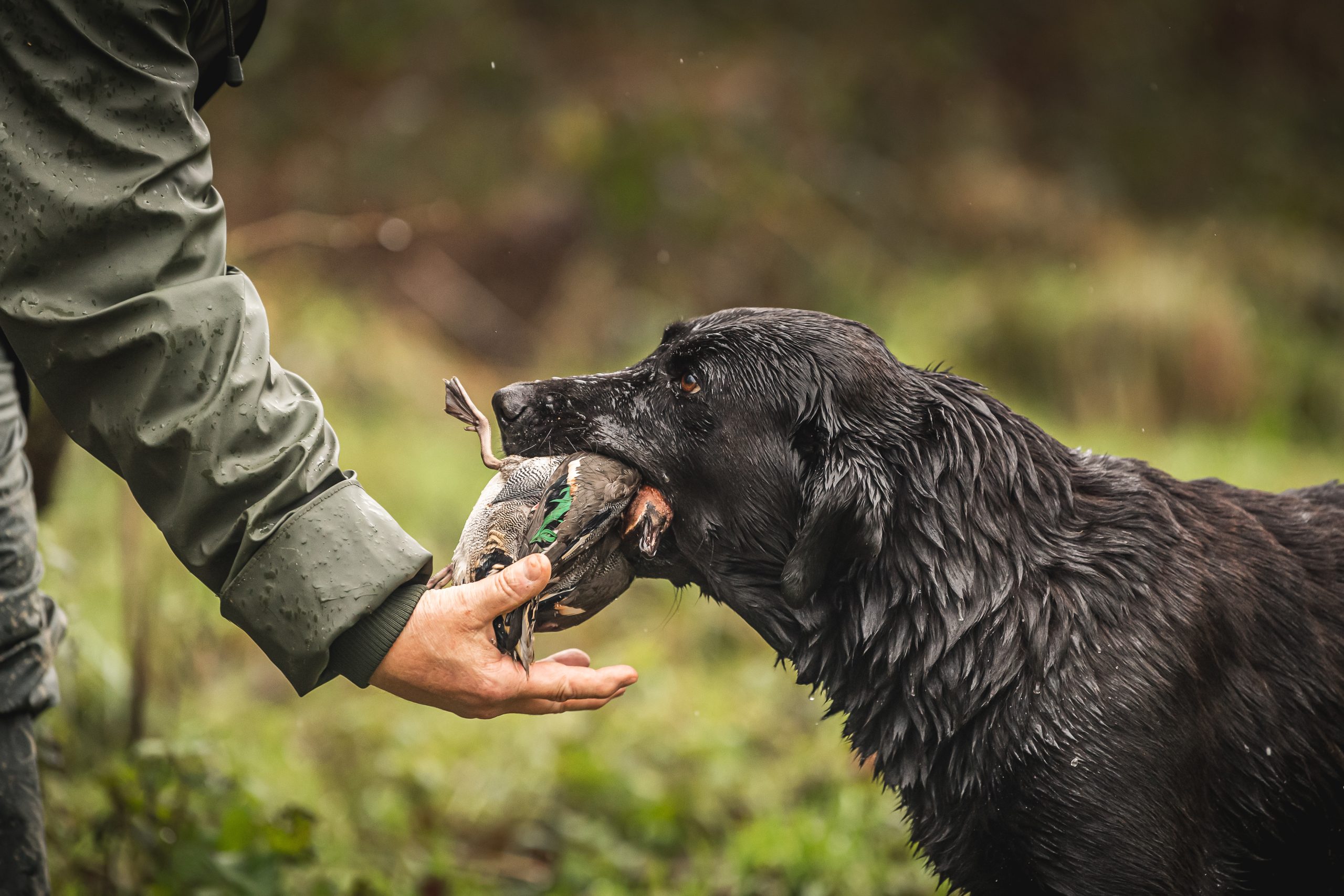Shooting
First shoot of the season – how did it go?
Would you like to speak to our readers? We offer sponsored articles and advertising to put you in front of our audience. Find out more.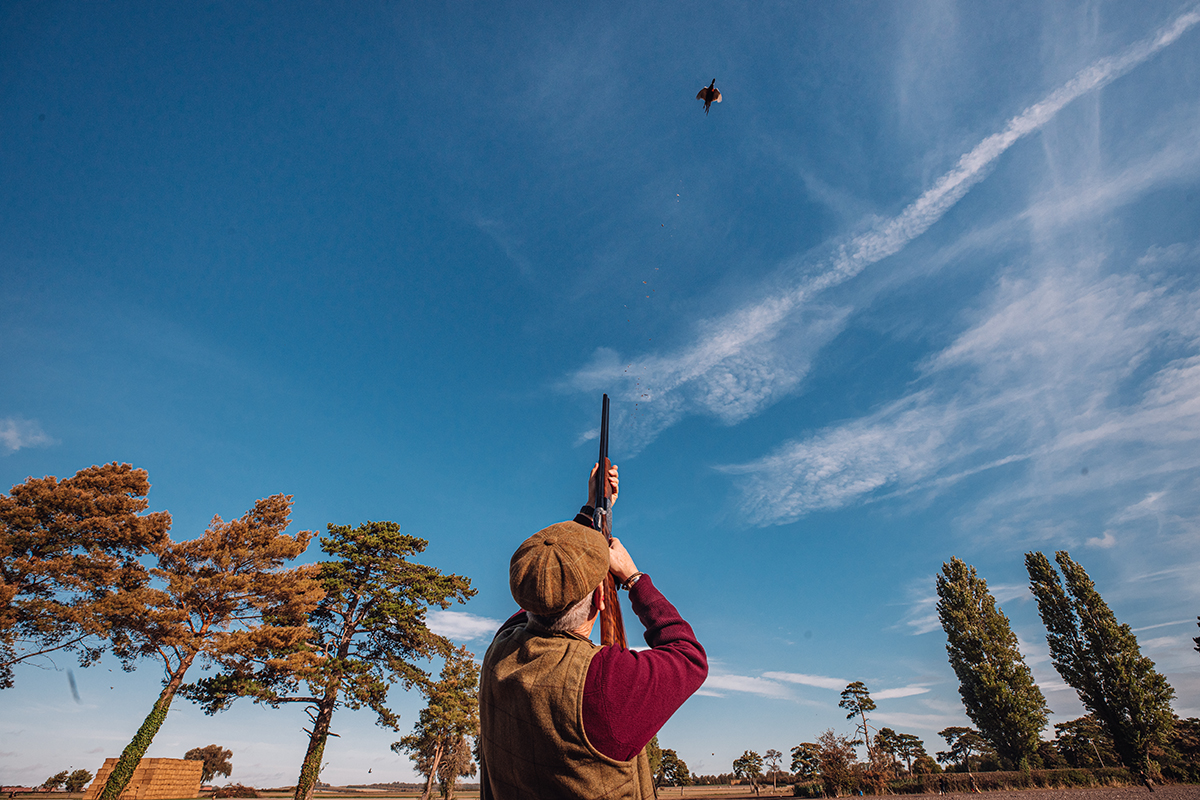 Jon Green, Dickmans belt
Jon Green, Dickmans belt
My offensively toned alarm has been a regular 5am feature since early June, a month earlier than planned if the truth be known. With the ever-changing saga of bird flu, the build-up to today’s wake-up call has been the most stressful to date.
No partridges, just pheasants — we’ve had to modify our plan. I’m grateful we have a plan; others have not been so lucky. Early starts have their benefits: brown hares, chortling grey partridges, swooping kites, bounding roe and the cacophony of farmland birds bring a smile to my face.
This morning my first priority is not feed and water, but getting ready for the first day of the season. Radios charged and the ritual of hanging my kit up the night before done, there’s time for a quick shave and a shower before nipping to the yard to prepare for my beaters and undertake a strategic walk with the flag, then it’s back to the cottage to pop on the tweeds. Alas, my walk involved no eager cocker for company, as boyo ripped a dew claw the day before, which finished a stressful week nicely.

Labrador Whisper retrieves a red-legged partridge on the Ocean drive
Steadily my team of athletes and Guns arrive with smiles and handshakes. Spirits are high, and despite the challenges of this season, everyone seems upbeat. The beaters don’t seem fussed about being in the horse box rather than the usual beaters’ bus, which awaits MOT repairs — it’s been quite a week. The beaters and pickers-up want to know the plan; it’s changed twice after a last-minute call about drilling. (Read more here about getting the best out of your beaters on a shoot).
Full of tea and coffee, we load up for the first drive, Dickmans Belt. Shortly after dropping the beaters off, my radio crackles with the harrowing words, “problem with the Gun bus”. Passing the good news to the waiting beaters, there’s the expected obscenities and leg-pulling, which helps distract my nerves. I hope the Guns don’t spook the birds early; will there be anything in the cover? I bloody well hope so. A quick decamp into their own vehicles and 10 minutes later they are on the pegs, ready.
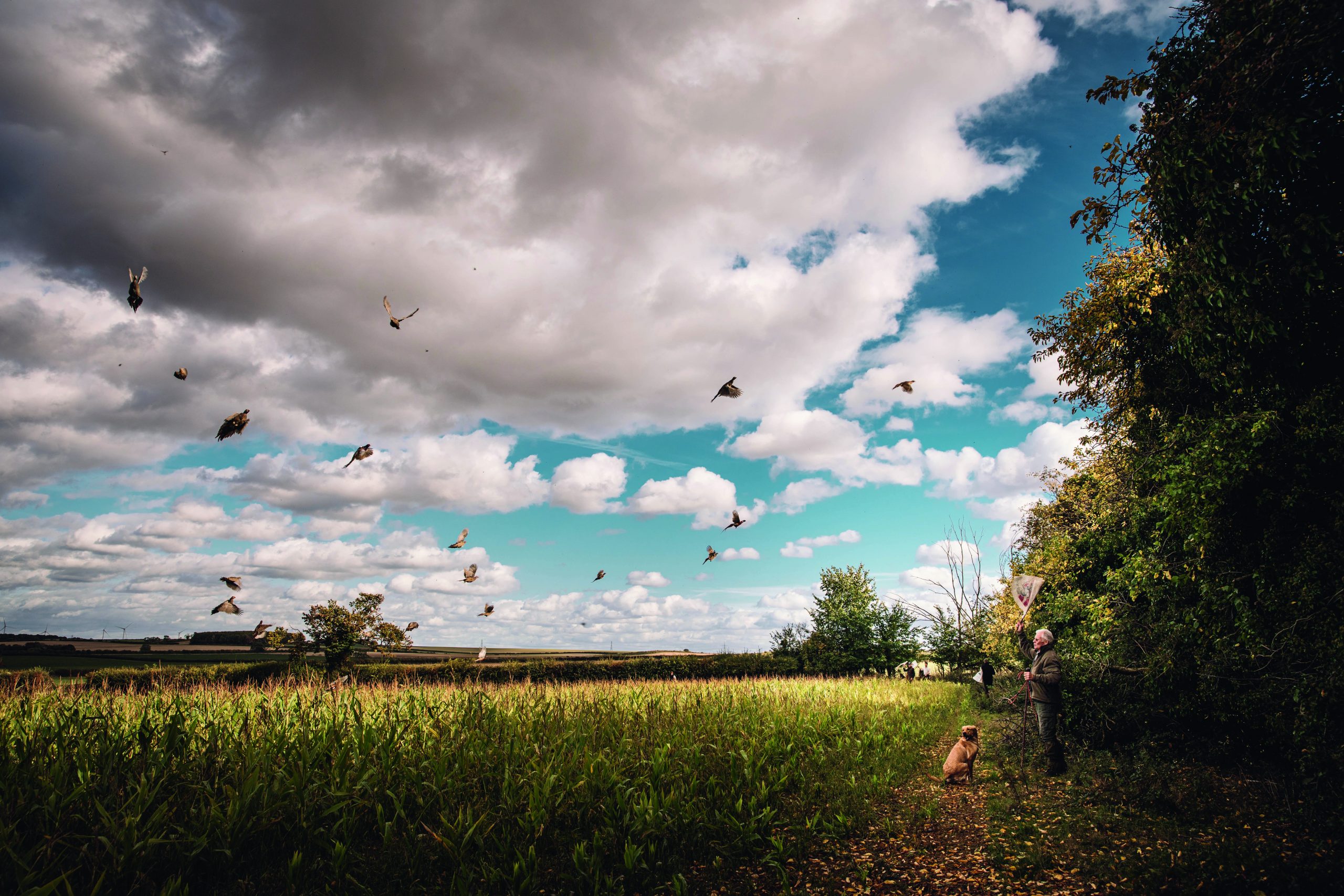
The sky fills with birds on the Orchard drive
With flanks set, once old Ted hobbles over we’re ready to go. Flags and hands clapping, we’re halfway down the cover and not a lot has happened. Things are starting to twitch in my breeks. Has a fox been through — or a stray dog-walker? One crack of the flag later and panic turns to relief as the first flush of the season lifts. Twenty or so, including three white pheasants, burst skyward and it’s not long before the first shots ring out.
After giving the Guns time to regain their composure, it’s time for another push. For a first go through, the birds are flying well and the whole line has action. We edge up the cover, stopping for more flushes. I can finally see over the maize and there’s some decent shooting going on. Steady flushes continue until the end, and with two blasts of the whistle that’s the first drive over. After hearing the shot count and a muffled “fantastic” from the shoot captain, Mathew, I start to relax.
After a quick “how’d you get on?” with the Guns, it’s off to the second drive, Chestnut Avenue, while the pickers-up retrieve the harvest. We haven’t done this drive for three seasons, but after a quick recap, we have got a plan sorted. Whether it will work is another matter.
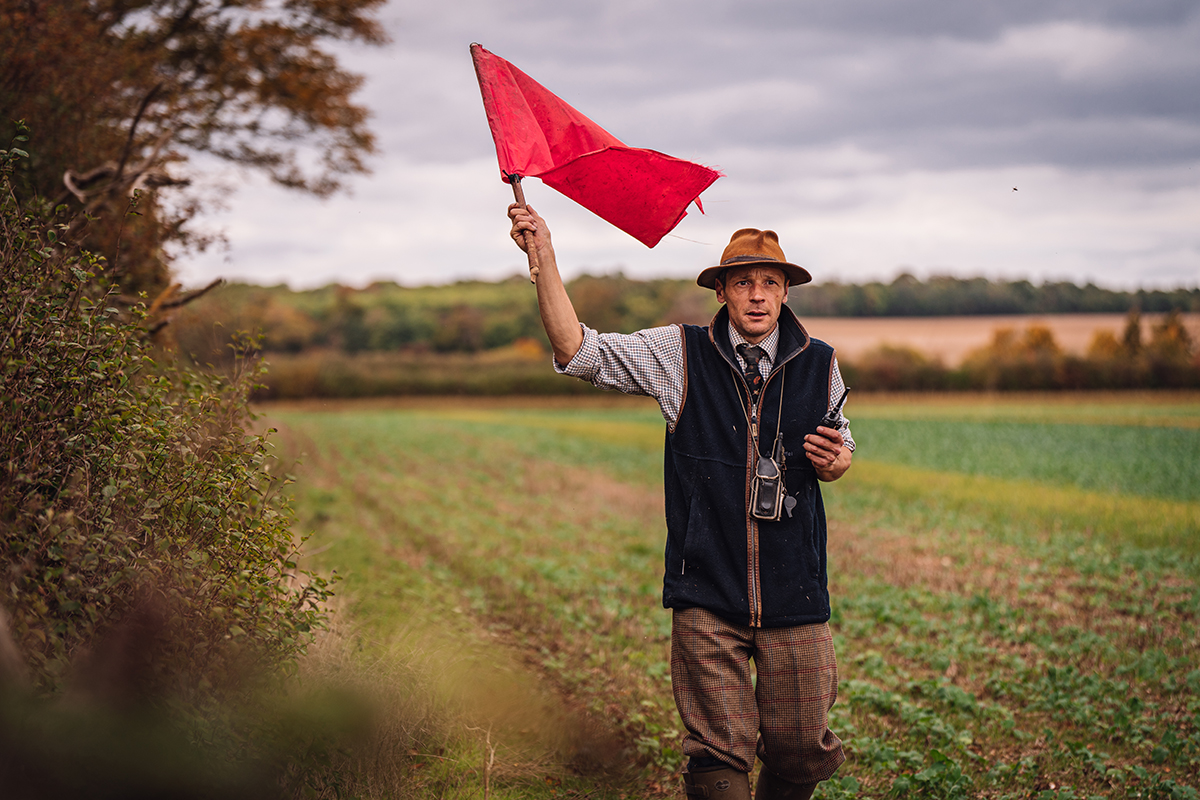
Gamekeeper Ed Coles on the Ocean drive
From all angles
With fields and belts either side of the drive, one of which has sheep in, we don’t use flags here — other than for pushing the top wire on the electric fence. It’s a short wait and Mathew gives the all clear. I start pushing the right-hand side down first. Pheasants soon start pouring out of the belt and stubble turnips, the majority staying low. The high numbers get the early opportunities as birds begin to lift. Worryingly, the sheep get a sprint on. We bring the other belts down and the action turns to the lower numbers, with a steady stream of shots and flushes from all angles until a final push of the ditch.
Beaters scurrying away quickly can only mean one thing: elevenses. I’m sure it’s the only reason they come. They have laid the table complete with candelabra. Glasses are filled with sloe gin and fizz. I pull rank and sample the first of Sam’s epic sausage rolls and accompanying ‘Dipney’. While the beaters get their sausage roll and gin fix, I head over to the Guns to see how they got on. The general consensus: dipping before the hedge, so maybe some adjustments next time. A reasonable yet modest bag of 40-plus so far. Things are ticking along nicely.
The Creek is next. Again, it’s been absent for a couple of years. I planned to do it first, so I’m not sure how productive it will be. It’s a small square wood with high trees that faces a larger wood where the pen is, so hopefully they’ll get up to go home. As predicted, it’s a bit like the keeper — short and sweet. Twenty-five shots later, it’s done. It could have done with another stop at the end of the wood, but what got up was good quality and all but one Gun got a shot.
Logistical nightmare
The next drive is West Green, a short-ish walk for the Guns as it’s the wood they’ve had their backs to — a bit of a logistical nightmare for me with only eight beaters due to Covid. Guns one to three stand to the left, and once we’ve brought the first block through, they move behind the beating line as back-guns. It’s a bit of a jungle at this time of year and we could do with three more dogs. There are some early shots, but I can’t see what’s happening, other than muntjac bolting from under my feet.
With one to three moved behind, we crack on with the next block and it looks encouraging; at least we can see where we’re going. There’s a few flushes and shouts of “back”, giving one to three a heads-up. Most going forward keep low. The end block is pushed right to left and normally ends with a large flush; shortly I realise I am missing a stop in the ditch. Whistle blown with a bit of frustration, there are 20 shots on the counter and it’s back to the yard for lunch.
Guns and beaters mingle while I count up and get logistics for the last two drives set in my head. It’s not long before the five-minute warning is given. Beaters loaded into the trailer, it’s a 10-minute journey to the penultimate drive, the Orchard — a belt of apple trees with damson, greengages, blackberries and a cover crop at the side. The field is partly enclosed by hedges, which with luck the birds will lift over. It can be an awkward drive but can be pushed either way; hopefully they go in the right direction.

The Guns enjoy tea and cake after a pleasing day in the field
The Guns are pegged out below and to the sides of the orchard. I bring in the right-hand field to hopefully pick up the wild Frenchmen, preparing to shout “English” if the local greys get up. There are eight pairs on this bit. Greys break out low into the sugar beet well out of the way, and a few pheasants follow suit. Crawling through the next hedge, I link up with the beaters and we start our pincer movement. We gently squeeze the cover as a few start trickling out. Shots ring out, and there’s a massive flush, sending birds vertical. Against the wind, two-thirds commit to heading for the orchard and no amount of flagging stops them. We’ll try it the other way next time.
The final drive is the Ocean, a long belt with an equally long wild bird mix strip and large fields either side, including 30 acres of sugar beet. There’s a small wood and block of cover at the far end, which we’ll bring in. As I drive to get in position, pheasants pour from the sugar beet in the opposite direction. I stop sharply, but before the door shuts, more birds break out to the opposite belt. The Guns are on their pegs, so there’s no turning back.
Lonely Frenchman
We bring in the wood and cover and make our way down the belt. It’s a long, bleak walk — pheasants are there but not interested in getting above a foot high. Two-thirds down, one lonely Frenchman makes it skyward and soon towers. Four shots later, I’m blowing the whistle. Disappointing, but if they don’t want to fly, they won’t fly. So it’s a “thank you, gentlemen” and back for a brew and a count up.
While tea and cake are consumed, I’m stringing and counting as beaters eagerly wait to see who’s won the sweep. Two pigeons, one redleg and 65 pheasants gives us 68 for 190 shots. Guns and beaters depart with smiles and a brace. Despite a few hiccups, it’s been an enjoyable first day in the field, and I’m thankful for it. It’s a year for being grateful, not greedy, and I can’t wait for next week’s 5am alarm.
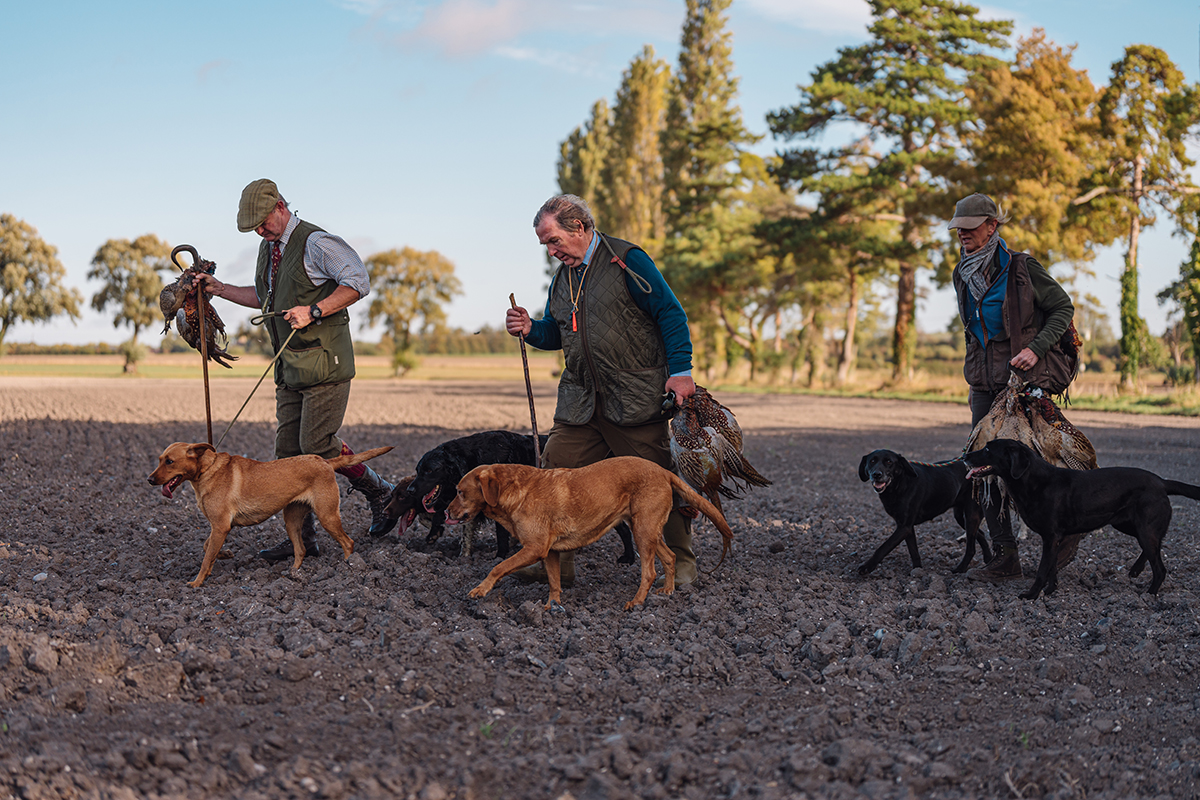
The picking-up team gathers the harvest from the first drive
Related articles
Shooting
Shotgun
Let’s bite the bullet
The ban on lead shot for all game shooting is moving apace so it’s time to find the best eco-friendly ammunition that suits you and your rifle
By Time Well Spent
Shotgun
Shotgun buying guides
Starting out? Make sure it fits
If you’re buying your first clay gun, the right fit takes precedence – not good looks, the brand your mate’s got or even price – warns Paul Austin
By Time Well Spent
Manage Consent
To provide the best experiences, we use technologies like cookies to store and/or access device information. Consenting to these technologies will allow us to process data such as browsing behavior or unique IDs on this site. Not consenting or withdrawing consent, may adversely affect certain features and functions.
Functional Always active
The technical storage or access is strictly necessary for the legitimate purpose of enabling the use of a specific service explicitly requested by the subscriber or user, or for the sole purpose of carrying out the transmission of a communication over an electronic communications network.
Preferences
The technical storage or access is necessary for the legitimate purpose of storing preferences that are not requested by the subscriber or user.
Statistics
The technical storage or access that is used exclusively for statistical purposes.
The technical storage or access that is used exclusively for anonymous statistical purposes. Without a subpoena, voluntary compliance on the part of your Internet Service Provider, or additional records from a third party, information stored or retrieved for this purpose alone cannot usually be used to identify you.
Marketing
The technical storage or access is required to create user profiles to send advertising, or to track the user on a website or across several websites for similar marketing purposes.

